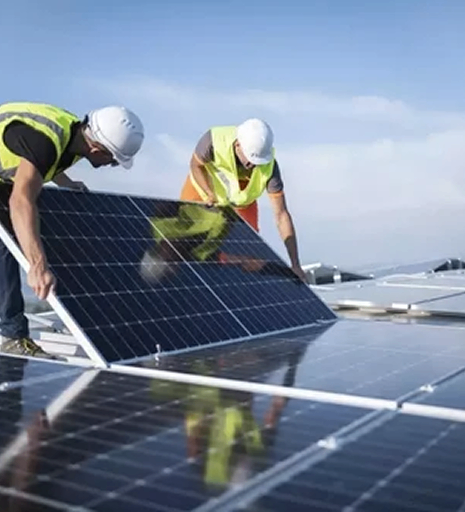SOLAR ENERGY IS THE POWER OBTAINED BY HARNESSING ENERGY FROM THE SUN’S RAYS.
While humans have utilized this renewable energy source for thousands of years, recent technological advancements have made it a more efficient and sustainable alternative to traditional fossil fuels.Whether you’re contemplating the switch to solar or just aiming to grasp the basics, this guide will illuminate the world of solar energy.
Solar Energy: Harnessing the Power of the Sun
Solar panels, also known as photovoltaic (PV) cells, convert sunlight into electricity. When sunlight hits the solar panel, it excites electrons in the cells, creating an electric current. This electricity can then be used to power homes, businesses, and more.
-

Environmentally Friendly
Solar power reduces reliance on fossil fuels, contributing to a decrease in greenhouse gas emissions.
-

Cost Savings
Despite the initial investment, solar can lead to significant savings on energy bills in the long run.
-

Energy Independence
Reduce dependence on external energy sources and enjoy the freedom of producing your own power.
-

Increased Home Value
Homes equipped with solar panels often have a higher resale value.

Solar System Components
-
Solar Panels
Capture sunlight and convert it into electricity.
-
Solar Inverter
Converts the direct current (DC) generated by panels into alternating current (AC) used in homes.
-
Mounting Equipment
Holds the panels in place, whether on rooftops or ground-mounted systems.
-
Batteries (Optional)
Store excess energy for use during nighttime or cloudy days

FAQs
How long do solar panels last?
25-30 years with minimal maintenance.
Do I need batteries?
Optional for off-grid PV systems or backup power.
Is solar viable in cloudy weather?
Yes! Modern panels work efficiently.
How to apply for net metering?
We handle net meter connection paperwork.
Get the Right Solution first
Request Expert Guidance
Share your challenge with us and our experts will help you choose the safest, most efficient option.


